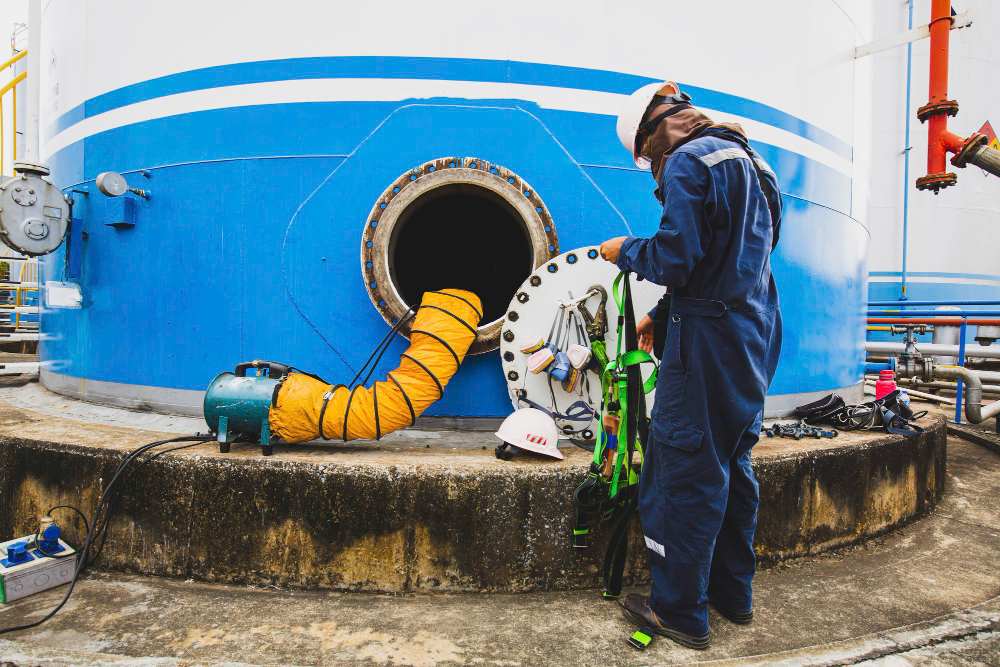If you’ve upgraded your heating system or simply don’t need oil anymore, you might be left wondering: “What do I do with my old heating oil tank?” It’s not as simple as just scrapping it, because in the UK there are rules to follow. Heating oil tanks need to be disposed of properly to avoid pollution, safety risks, and fines.
This guide will walk you through the process step by step, explain the costs, and answer common questions homeowners often have.
Why Proper Oil Tank Disposal Matters
Old heating oil tanks can still hold leftover oil and sludge, which can leak and contaminate soil or groundwater. This isn’t just bad for the environment—it could also land you with a hefty clean-up bill. By disposing of your oil tank the right way, you:
- Stay on the right side of UK environmental laws
- Protect your property and local wildlife from oil leaks
- Avoid problems when selling your home
- Get peace of mind knowing the job’s been done properly
How to Dispose of a Heating Oil Tank: Step by Step
Check Your Tank’s Condition
Is the tank still in decent shape? Sometimes, a good-quality tank can be sold or reused. If it’s old or damaged, though, removal is the best option.
Deal With Any Leftover Oil
If there’s still oil inside, you’ve got two choices:
- Use it up in your heating system if it’s still connected.
- Get a professional to pump it out and safely store or recycle it.
Don’t try to empty the tank yourself—it’s risky and can cause serious contamination.
Call a Licensed Waste Carrier
In the UK, only registered waste oil contractors are legally allowed to remove heating oil tanks. They’ll:
- Empty and clean the tank
- Cut it into safe sections if needed
- Transport it to a licensed facility
- Give you a waste transfer note as proof of legal disposal

Tank Removal (Above or Underground)
- Above-ground tanks are usually straightforward. The contractor disconnects the pipes, empties it, and takes it away.
- Underground tanks are more complicated—they often need excavation and sometimes soil testing if leaks are suspected.
Final Clean-Up and Certification
Once it’s gone, the contractor should tidy the site and issue paperwork confirming the tank was disposed of properly. Keep this safe—it could be useful when selling your home.
Can You Just Leave an Oil Tank in Place?
Yes, but only if it’s decommissioned properly. This means it must be drained, cleaned, and then filled with something harmless like foam, sand, or concrete.
While this option is cheaper, full removal is usually better in the long run—it avoids future complications, especially if you ever sell the property.
How Much Does Oil Tank Removal Cost in the UK?
Costs vary depending on the size of the tank, whether it’s above or below ground, and how much oil is left inside.
- Above-ground tank: £500 – £1,000 (on average)
- Underground tank: £1,000 – £2,000+ (due to excavation and testing)
Getting a few quotes from licensed contractors is the best way to know where you stand.
Frequently Asked Questions
Do I need planning permission to remove a heating oil tank?
In most cases, no. But if your property is listed or in a conservation area, it’s worth checking with your local council first.
How do I know if my oil tank is leaking?
Signs include oily smells, dark patches in soil, or unusually high oil usage. If you suspect a leak, contact an oil tank specialist immediately.
Can I cut up and scrap the tank myself?
No. Heating oil is classed as hazardous waste, and DIY disposal could land you with fines and contamination issues. Always use a licensed professional.
What happens to the old oil?
Most contractors will recycle it, recondition it for reuse, or safely dispose of it at an authorised facility.
Is it cheaper to decommission instead of removing?
Yes—decommissioning costs less, but full removal avoids future risks, especially if you’re planning to sell your home.
Final Thoughts
Disposing of a heating oil tank in the UK isn’t a DIY job—it needs to be handled by professionals who know the rules. By doing it properly, you’ll protect your property, the environment, and your wallet.
If you’re thinking about removing your tank, the best first step is to get quotes from licensed waste oil contractors. That way, you’ll know exactly what’s involved and how much it will cost.










